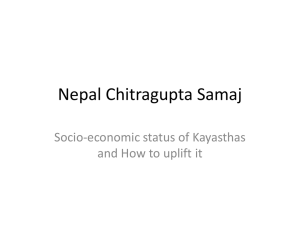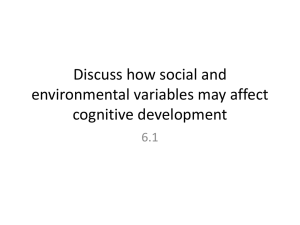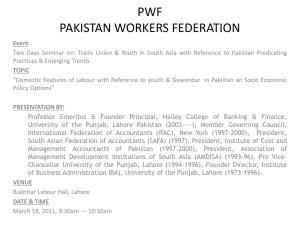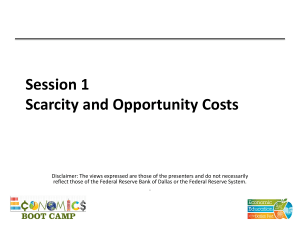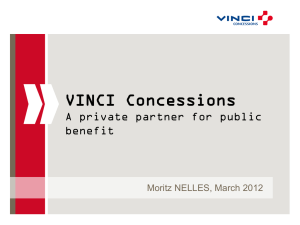Freakonomics Ch 6
advertisement
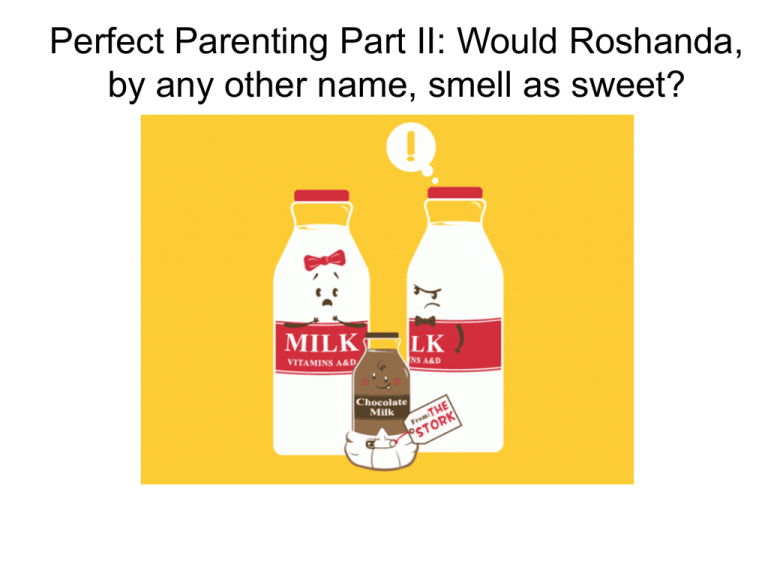
Perfect Parenting Part II: Would Roshanda, by any other name, smell as sweet? Does the child’s name matter when it comes to the child’s potential economic success? NO (well, kind of) Based on Data by Roland Fryer Jr., we know three things: 1.) names chosen by black and white parents are extremely dissimilar. 2.) a child’s name is not a determinant of success but rather a predictor because of what it conveys about a child’s parents (and what it means for the child’s “likely” economic success. 3.) names tend to cycle through socio-economic strata over time, moving from higher to lower strata and eventually out of favor with most parents. So Mr. Martinez, what does any of this have to do with economics??? (fantastic question sir, I am so happy you asked) 1.) CORRELATION VS. CAUSATION -We must be careful to distinguish between the two. -While we may believe that a child’s name determines it’s success, it is actually the relationship between the child’s prospects for success and the parents socio-economic characteristics. -***On a related note, it is worth considering whether a person’s name could contribute to discrimination against that person. 2.) The “SNOB effect” in consumer purchasing: -SNOB effect: when consumers may purchase a higher-priced brand of some item simply to demonstrate social superiority. -***this is cited as the ONE exception to demand unless you consider it to be a matter of “tastes and preferences.” - When high socioeconomic parents name their children eccentric names, the kids tend to grow up to be successful as well. -**compare this to “consumer income” and “buying” a name for your child with names as “normal goods.” -Normal/low socioeconomic parents tend to choose the names of people they see as successful for their children (i.e. the eccentric ones) -**like “number of consumers,” as they increase, so does the demand for a specific eccentric name. -And the pattern repeats… 3.) Relative Scarcity -As the use of a name increases and, consequently, it becomes less scarce, its market “value” decreases, and with it, the willingness of anyone to bestow it upon their child. -Now my ladies and gents, (Are you with me?) here is where we get down to the nitty gritty… 1.) First, consider the “demand” curve for a particular name. - Because there is no “price” to name your child, marginal cost is zero - The curve itself, represents the marginal benefits of each additional occurrence of the name. -Since, there is no “price” for naming your child, you can change the “price’ axis of the graph to value, as in the “value” of the name in socio-economic terms. -Incidence of the name takes the place of “quantity.” -Now, when high socio-economic parents name their child (ahem!) “Achilles” for instance, the graph for that name is born (D1). And it is likely that Achilles becomes something along the lines of a “baller.” -As the “taste and preference” for that name increases (because of (1) the “snob effect” and (2) the number of lower income parents who choose that name to enhance their child’s chances for success), the demand curve shifts to the right (D2) - However, as time goes by and the name becomes more prevalent its relative scarcity declines and it is no longer associated primarily with upper-income families, its marginal value and “demand” decrease to D3.
